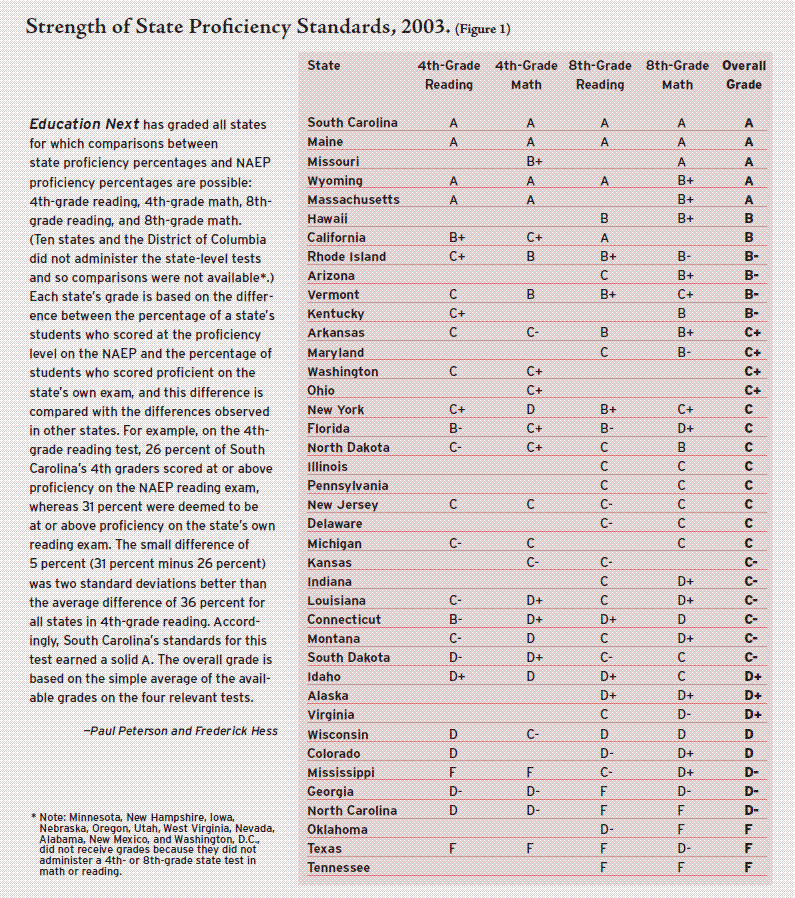Johnny can’t read … in South Carolina. But if his folks move to Texas, he’ll be reading up a storm. What’s going on?
It turns out that in complying with the requirements of No Child Left Behind (NCLB), some states have decided to be a whole lot more generous than others in determining whether students are proficient at math and reading. While NCLB required all states to have accountability systems in place, it did not say specifically how much students should know at the end of 4th or any other grade.
Some states have risen to the challenge and set demanding proficiency levels for their students, while others have used lower standards to inflate reported performance. Not only is the disparity confusing, but, perversely enough, the states with the highest expectations often stand accused of having the most schools said to be in need of improvement-even when their students are doing relatively well.
Because of such disparities, the states with the highest standards will be tempted to lower their threshold for determining proficiency, especially when NCLB teeth begin to bite. With the passage of time, states may be tempted to race to the bottom, lowering expectations to ever lower levels so that fewer schools are identified as failing, even when no gains are being made.
Because each state selects its own testing system and sets its own passing scores, there is no direct way to compare the proficiency levels established by one state against the others. However, NCLB does require each state to administer the National Assessment of Educational Progress (NAEP) to a sample of students in 4th and 8th grade in reading and in mathematics. Comparing the percentage of students achieving proficiency on state tests with the percentage achieving proficiency on the NAEP suggests how demanding each state’s standards are.
For instance, if only 50 percent of a state’s 4th graders are proficient by the nationally determined NAEP standard, but the state claims proficiency for 80 percent, then the state should be given an F for its failure to establish high expectations for its students. But if a state with an equivalent score on the NAEP says only 45 percent are proficient, then it should be given an A for having standards that exceed even those of the NAEP.
In practice, only five states–South Carolina, Maine, Missouri, Wyoming, and Massachusetts–deserve the A grade. A lot more deserve Ds and Fs, the worst grades going to Tennessee, Texas, and Oklahoma.
To help citizens of every state know whether their state is maintaining high expectations for its students, Education Next plans to issue periodic assessments of how the states compare with one another. Figure 1 shows initial results for the 40 states for which both state and NAEP proficiency levels are currently available. In the future, it will be possible to compare all states with one another.
By reporting this straightforward, objective grading system, we hope to help eliminate some of the murkiness that still prevails. It would be even better if, as Caroline M. Hoxby recommends elsewhere in this issue (see “Inadequate Yearly Progress“), the federal government issued its own grade for each state.
Paul E. Peterson and Frederick M. Hess are editors of Education Next. Mark Linnen provided research assistance.



